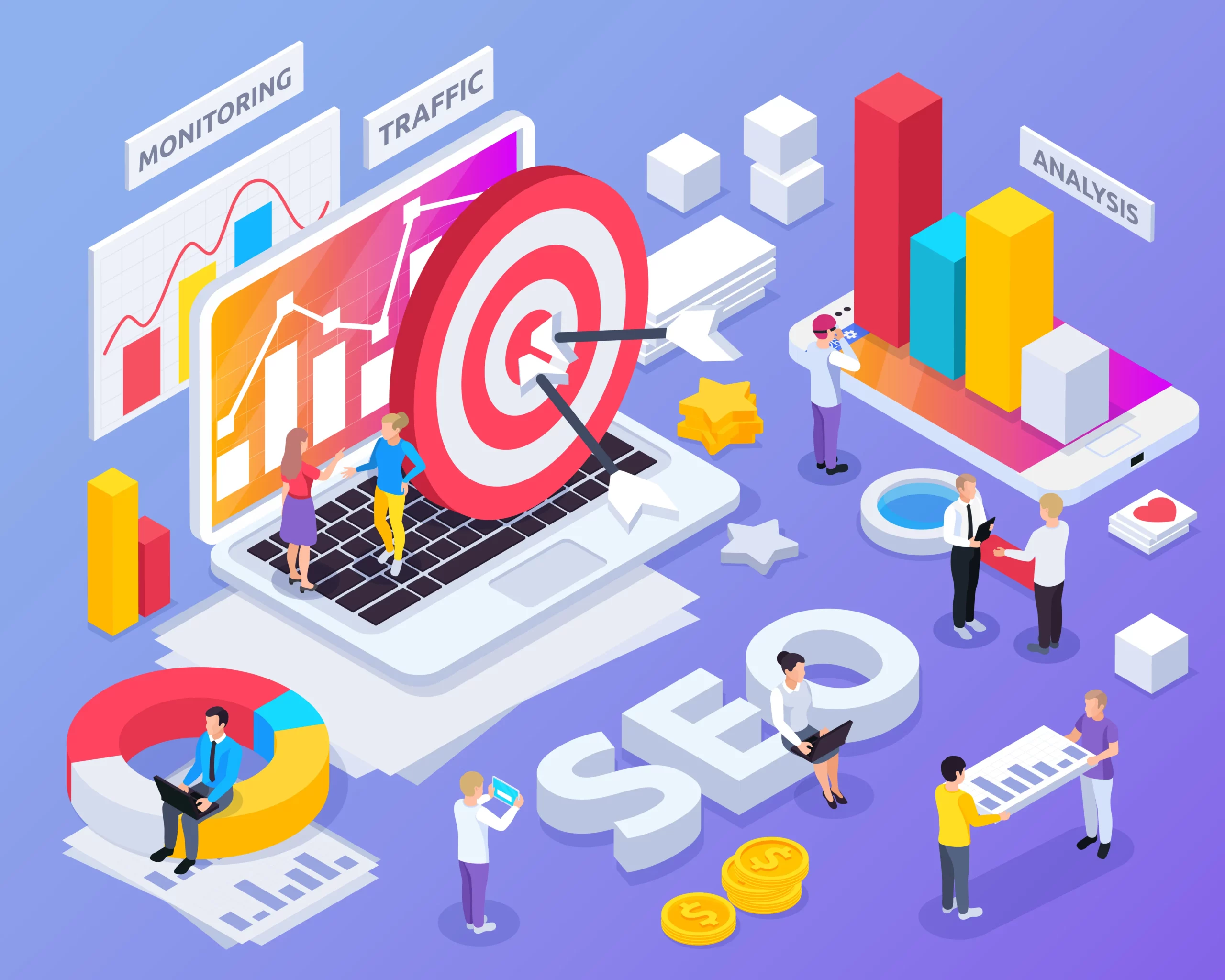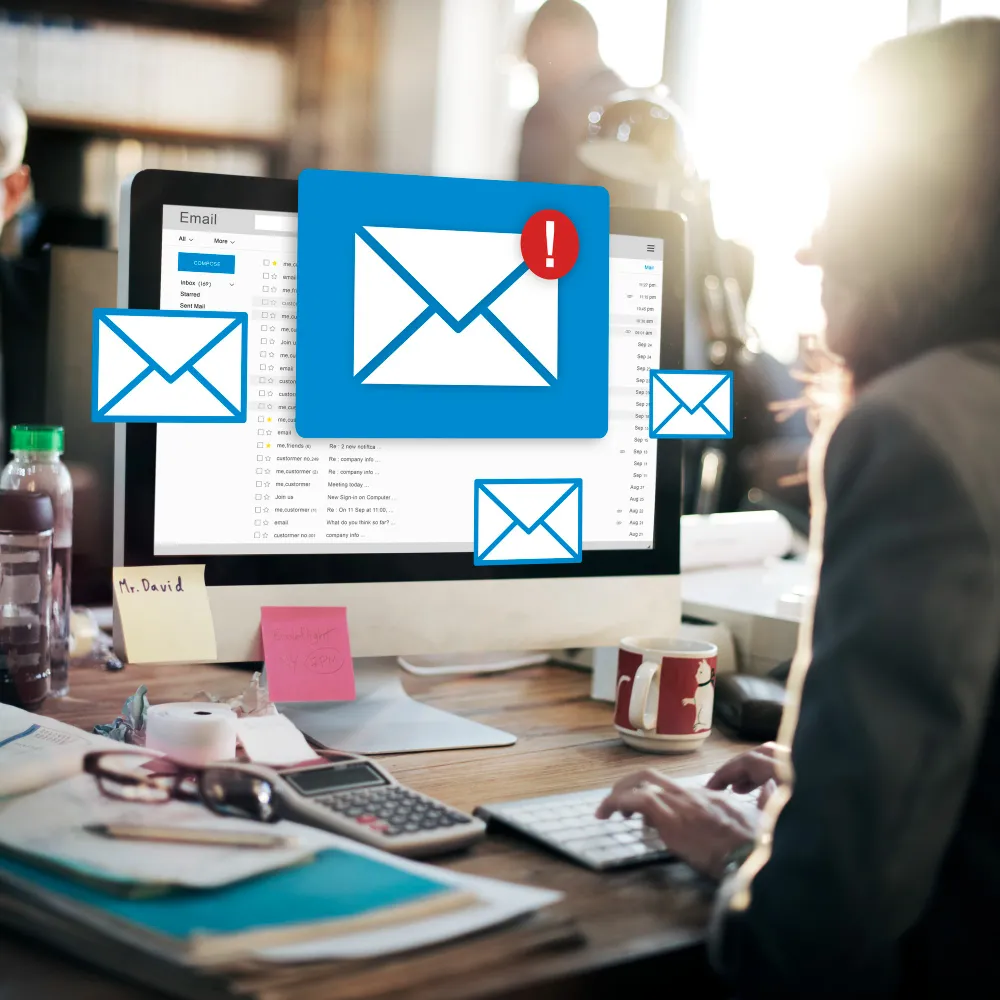Picture this: It’s a busy morning, and you wake up to the sound of your alarm. Bleary-eyed, you reach for your phone and groggily check your notifications. Among the flurry of social media updates and news alerts, what’s one thing that’s always present? That’s right, your trusty email inbox.
Despite the rise of social media and other digital communication channels, email remains an integral part of our lives. In this blog post, we’ll explore the enduring relevance of email marketing and why it should continue to be a crucial component of your digital marketing strategy.
The Continued Relevance of Email
While social media platforms and messaging apps have transformed the way we connect and engage online, email has stood the test of time. Here are some compelling statistics that demonstrate the ongoing relevance of email:
Email Users
According to Statista, the number of email users worldwide is projected to reach 4.6 billion by 2025, indicating the widespread adoption and usage of email as a communication tool.
Email Open Rates
Despite the abundance of digital noise, email open rates remain impressive. In a study by HubSpot, the average open rate across industries was found to be around 20%. This means that one in five recipients are actively engaging with their emails.
Conversion Potential
Email has proven to be a powerful tool for conversions. According to Campaign Monitor, email marketing has an average ROI of $42 for every $1 spent. This exceptional return on investment showcases the effectiveness of email as a marketing channel.
Personalization and Segmentation
Advances in email marketing technology allow for personalized and targeted messaging. Research by SmarterHQ revealed that 72% of consumers are more likely to engage with personalized email campaigns, further emphasizing the value of customization in email marketing.
These statistics illustrate that email continues to be a prominent and influential communication channel, making it an indispensable asset for businesses seeking to connect with their audience.
Unpacking Email Marketing
Email marketing is more than just sending promotional messages to a list of subscribers. It’s a strategic approach to engage and nurture your audience through targeted and personalized email campaigns. Let’s explore the different types of email marketing campaigns:
Welcome Emails
These emails are sent to new subscribers, creating a positive first impression and setting the stage for future interactions. They often include a warm greeting, a brief introduction to your brand, and a call-to-action to explore your website or make a purchase.
Promotional Emails
Promotional emails are designed to showcase your products, services, or special offers. They can include limited-time discounts, exclusive deals, or new product launches. The goal is to encourage recipients to take action and make a purchase.
Educational Emails
These emails provide valuable information, tips, or educational content to your subscribers. By offering insights and expertise related to your industry, you position your brand as a trusted resource and build credibility among your audience.
Cart Abandonment Emails
When a customer adds items to their cart but doesn’t complete the purchase, cart abandonment emails can help recover those lost sales. These emails remind customers about their abandoned cart, often including personalized recommendations or incentives to encourage them to complete the purchase.
Think of email marketing as a conversation between you and your subscribers. Each email is an opportunity to connect, engage, and build a lasting relationship. Just like a conversation, it requires careful listening, personalization, and delivering value.
By understanding the different types of email campaigns, you can leverage the power of email marketing to drive results for your business.
The Benefits of Email Marketing
Why should email marketing be an integral part of your digital marketing strategy? Let’s explore the numerous benefits it offers with Real-Life Case Study: Netflix’s Email Marketing Success:


Direct Communication
Email allows you to communicate directly with your audience, delivering your message straight to their inbox. Unlike social media algorithms or search engine rankings, you have complete control over your email campaigns, ensuring your message reaches the intended recipients.
Netflix utilizes email marketing to establish direct communication with their subscribers. By delivering personalized content, including new releases, personalized recommendations, and exclusive offers, they ensure that their messages reach the right audience at the right time. This direct line of communication helps maintain engagement and drives customer loyalty.
Personalization
With email marketing, you can segment your audience based on their preferences, behaviors, or demographics. This enables you to personalize your messages, delivering targeted content that resonates with each recipient, increasing engagement and conversion rates.
Netflix leverages subscriber data to personalize their email marketing campaigns. They analyze viewing preferences, watch history, and user behavior to send tailored recommendations and targeted content. This level of personalization creates a more engaging and relevant experience for subscribers, resulting in increased viewership and customer satisfaction.
Cost-Effectiveness
Compared to other marketing channels, email marketing is cost-effective. With minimal overhead costs, you can reach a large number of subscribers without breaking the bank. The high ROI associated with email marketing makes it a valuable investment for businesses of all sizes.
Email marketing plays a pivotal role in Netflix’s cost-effective marketing strategy. Compared to traditional advertising channels, email campaigns require lower investment, making them a highly cost-effective method to engage with their audience. With a large subscriber base, Netflix reaches millions of users at a fraction of the cost of other marketing avenues.
Measurable Results
Email marketing provides actionable insights and metrics to measure the success of your campaigns. From open rates and click-through rates to conversions and revenue generated, you can track and analyze the performance of your emails, allowing you to refine your strategy for better results.
Netflix tracks and measures the performance of their email marketing campaigns meticulously. They analyze open rates, click-through rates, and conversions to gain insights into subscriber engagement and behavior. These measurable results enable Netflix to refine their strategies, optimize content, and deliver more impactful email campaigns to maximize their marketing efforts.
Netflix’s Email Marketing


Netflix’s success in leveraging email marketing demonstrates the benefits of direct communication, personalization, cost-effectiveness, and measurable results. By implementing these strategies effectively, they have enhanced customer engagement, fostered loyalty, and ultimately driven business growth in the highly competitive streaming industry. More companies like Airbnb, Grammarly, and Amazon have successfully leveraged email campaigns to engage their audience, drive conversions, and foster long-term customer relationships.
Incorporating Email Marketing into Your Digital Marketing Strategy
Now that we understand the importance of email marketing and its different campaign types, let’s explore how you can effectively incorporate email marketing into your overall digital marketing strategy:


Define Your Goals
Start by identifying your goals for email marketing. Is it to drive sales, increase brand awareness, nurture leads, or improve customer retention? Clearly defining your objectives will help you tailor your email campaigns and measure their success accurately.
Build a Quality Email List
Focus on growing a quality email list of engaged subscribers who are genuinely interested in your brand. Offer incentives, such as exclusive content or discounts, to encourage visitors to subscribe. Leverage lead generation tactics like website pop-ups, landing pages, and social media campaigns to capture email addresses.
Segmentation and Personalization
Divide your email list into segments based on demographics, interests, purchase history, or engagement levels. This allows you to send targeted and personalized content that resonates with each segment. Use automation tools to deliver timely messages triggered by specific actions or milestones.
Spotify’s Segmentation and Personalization Success


Spotify, the popular music streaming platform, excels in segmentation and personalization to deliver targeted content to their subscribers. By analyzing user data such as listening preferences, favorite genres, and music history, Spotify segments their email list into distinct groups. They then create personalized email campaigns that resonate with each segment’s musical tastes, sending tailored recommendations, curated playlists, and concert alerts.
For example, Spotify may send an email to a segment of users who enjoy a specific genre, featuring new releases and playlists within that genre. Another segment might receive emails with personalized playlists based on their favorite artists or songs. By leveraging subscriber data, Spotify delivers highly relevant and engaging content, fostering a deeper connection with their audience.
Furthermore, Spotify personalizes subject lines and email content to capture the attention of individual subscribers. They may include the recipient’s name, incorporate personalized recommendations, or highlight recent activity. This level of personalization enhances the overall email experience and increases the chances of subscriber engagement and click-through rates.
Spotify’s success in segmentation and personalization showcases the effectiveness of tailoring email campaigns to specific segments based on user data. By delivering targeted content, Spotify enhances subscriber satisfaction, boosts engagement, and ultimately drives usage and loyalty within their platform.
Craft Compelling Content
Create engaging and valuable content that your subscribers look forward to receiving. Whether it’s informative newsletters, product updates, or curated industry insights, focus on providing content that solves problems, entertains, or educates your audience. Incorporate eye-catching visuals, compelling subject lines, and clear call-to-action buttons to encourage clicks and conversions.
Test and Optimize
Continuously test different elements of your email campaigns, such as subject lines, CTAs, content formats, and send times. A/B testing allows you to gather data and insights to optimize your emails for better performance. Analyze metrics like open rates, click-through rates, and conversion rates to identify areas for improvement and refine your strategy.
Common Pitfalls in Email Marketing and How to Avoid Them
While email marketing can be highly effective, there are common pitfalls you should avoid to maximize your success:


Overwhelming Frequency
Bombarding your subscribers with too many emails can lead to email fatigue and increased unsubscribe rates. Find the right balance and frequency based on your audience’s preferences and the nature of your business.
Lack of Mobile Optimization
With the majority of emails being opened on mobile devices, it’s essential to ensure your emails are mobile-friendly. Optimize your email templates, use responsive designs, and test them across different devices and email clients to provide a seamless experience.
Neglecting List Hygiene
Regularly clean and maintain your email list by removing inactive subscribers, correcting invalid email addresses, and managing unsubscribes. This helps maintain a healthy list and ensures your emails reach the right audience.
Ignoring Analytics
Don’t overlook the power of email analytics. Monitor key metrics and track the performance of your campaigns to gain insights and make data-driven decisions. Use these insights to refine your content, segmentations, and overall strategy.
By incorporating email marketing into your digital marketing strategy and avoiding these common pitfalls, you can leverage the power of email to nurture leads, build customer relationships, and drive measurable results.
Conclusion
Email marketing continues to be a powerful tool in the digital marketing landscape, providing a direct and personalized way to engage with your audience. As we have explored throughout this blog, email marketing offers numerous benefits, including its continued relevance, direct communication, personalization capabilities, and cost-effectiveness.
By incorporating email marketing into your overall digital marketing strategy, you can maximize its impact and leverage its unique advantages.
While email marketing can yield exceptional results, it’s important to be aware of common pitfalls and avoid them. Overwhelming your subscribers with excessive emails, neglecting mobile optimization, lacking personalization, and ignoring analytics and feedback can hinder the effectiveness of your campaigns.
As the digital landscape evolves, email marketing remains a valuable channel for businesses to connect with their audience, foster relationships, and drive desired outcomes.
Ready to take your email marketing to the next level? Contact Neuroimpakt today for expert guidance and assistance in implementing a successful email marketing strategy that will propel your business forward.


